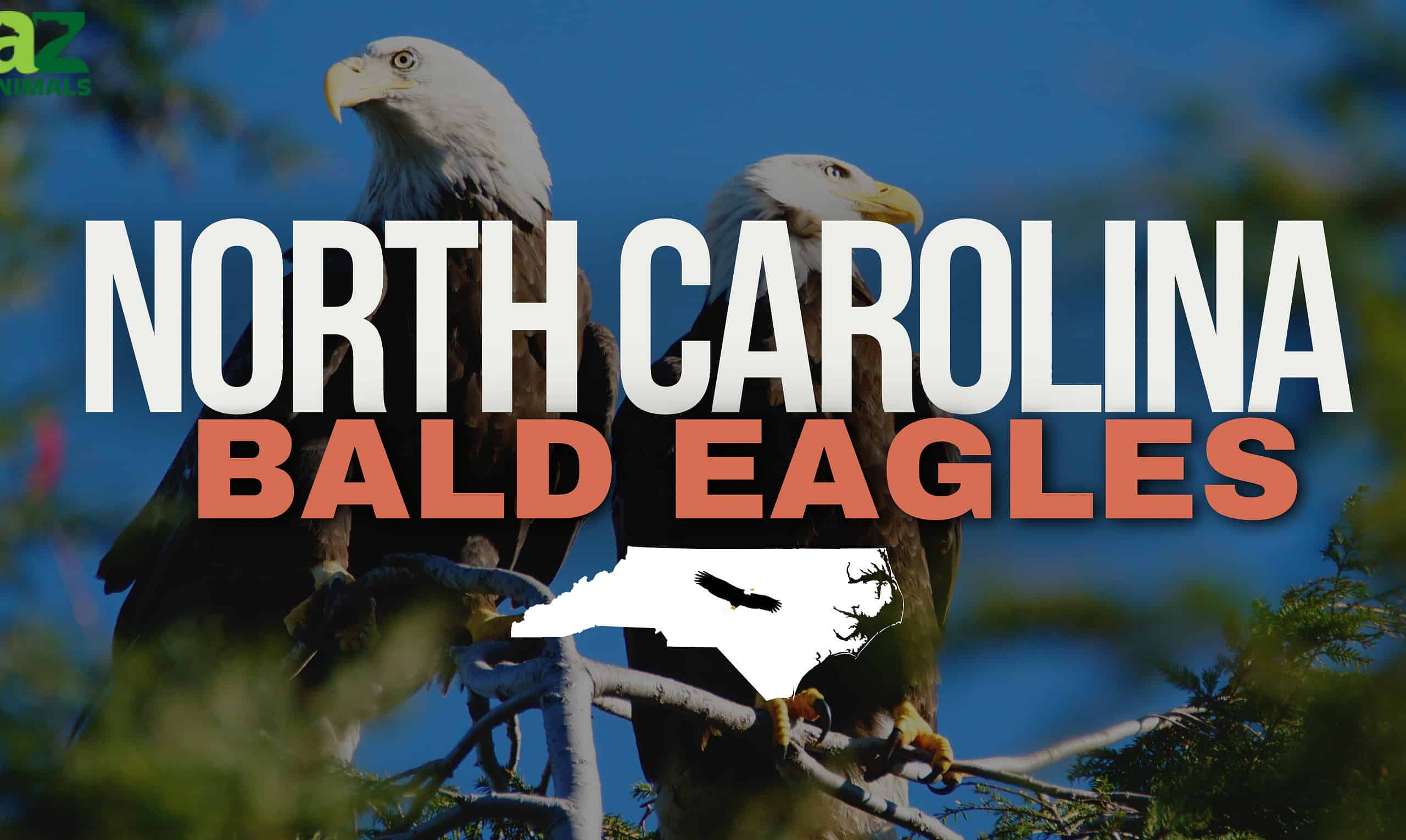Bald eagles are located throughout North Carolina, soaring gracefully through the skies near large bodies of water. Their resurgence in the state followed a period of decades with no confirmed sightings. However, from 1999 to 2021, researchers found 32 bald eagle nests in the state, and today, their range includes areas in the mountain, piedmont, and coastal regions. Keep reading to discover the top seven places to see bald eagles in North Carolina.
Bald eagles are protected by the Bald and Golden Eagle Protection Act, although they were removed from the federal list of endangered species in 2007. Bald eagles are migratory birds traveling south from Canada and the northern United States to southern regions of the U.S. during the winter months. They build their nests inside tall trees near large bodies of water, where they hunt for fish and small birds and mammals.
7. Lake James

Lake James stretches for nearly 7,000 acres in the foothills of the Blue Ridge Mountains.
©iStock.com/Eifel Kreutz
In 1999, after decades without bald eagle sightings, the first nest in North Carolina was found at Lake James. In 2022, researchers with the Bald Eagle Monitoring Program at Lake James reported five bald eagle nests that have been used recently by nesting pairs of eagles.
Bald eagles are most active around Lake James from December through March. During this time, migratory eagles use the forested area around the lake to nest, mate, and fledge their young.
In 2023, members of the bald eagle monitoring team discovered an injured juvenile. Researchers transferred the young bald eagle to the Carolina Raptor Center for treatment. The injured bird was later transferred to a rehab center on the state’s coast before being reintroduced to the wild.
6. Lake Norman
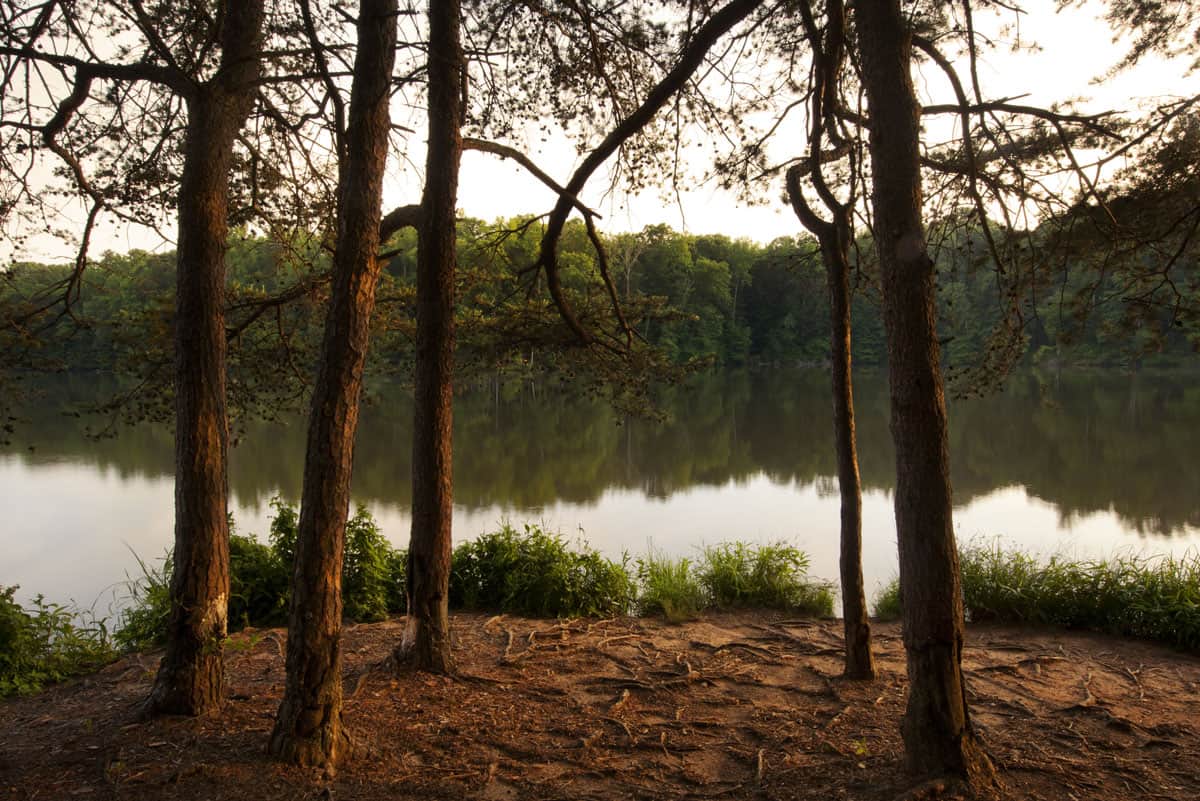
Although bald eagles are less common around Lake Norman, the area around the lake is home to several nesting pairs.
©iStock.com/jdwfoto
Duke Energy, which manages Lake Norman, conducted a survey of the area in 2019 and found 35 bald eagles between Lake Norman and Lake Wateree to the south, in addition to seven bald eagles between Lake Norman and Lake James to the north. Surveyors identified a nest near Marshall Steam Station where a female bald eagle was nesting on an egg.
Although there are fewer bald eagles around Lake Norman due to rapid development, the lake continues to attract the raptors with its abundant fish. Lake Norman contains several varieties of bass, crappie, and catfish that sustain bald eagles over the winter months.
5. DuPont State Recreational Forest
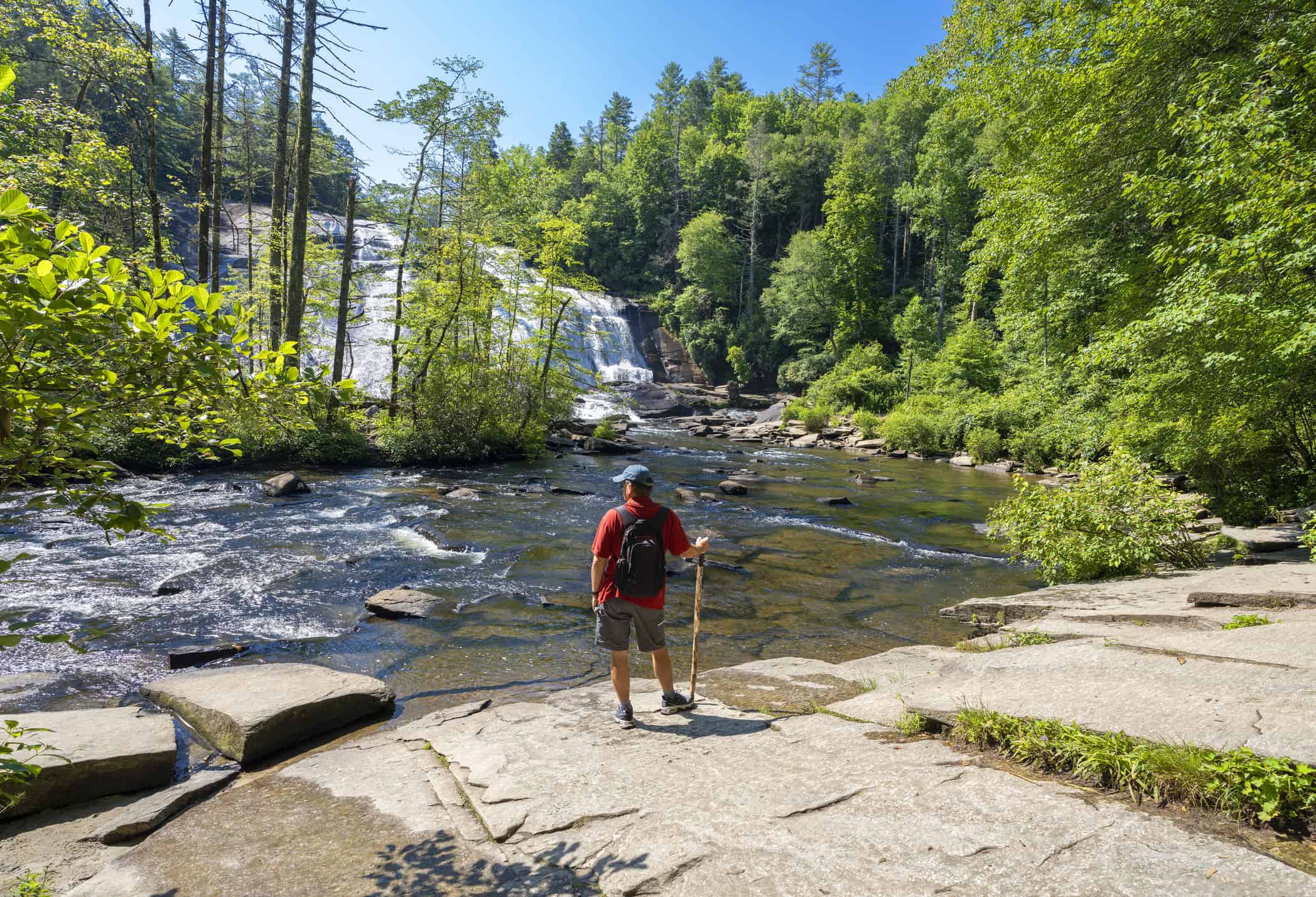
There are five lakes within the DuPont State Recreational Forest.
©MargaretW/iStock via Getty Images
Located southwest of Asheville, the DuPont State Recreational Forest stretches for over 10,000 acres in the Blue Ridge Mountains. The forest contains five lakes, including the 100-acre Lake Julia. Bald eagles make their home around Lake Julia during the spring and summer, along with barred owls, pine warblers, and scarlet tanagers.
Camping is not allowed at Lake Julia, but bird watchers can hike in from High Falls or Fawn Lake. Canoeing, kayaking, and paddle boarding are allowed on the lake, but visitors must carry their vessel to the lake.
4. Lake Mattamuskeet
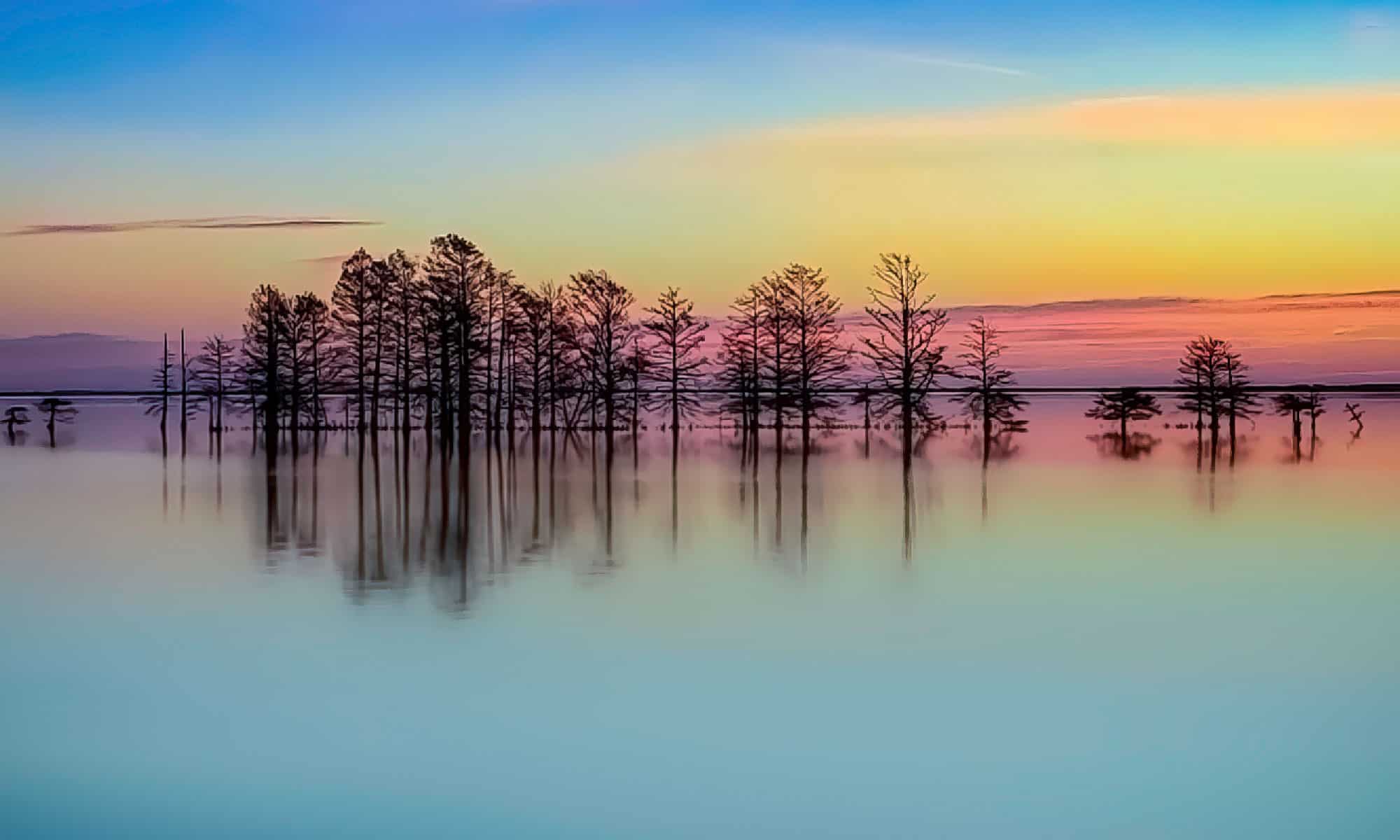
Located near the coast, Lake Mattamuskeet is surrounded by cypress trees.
©iStock.com/Rod Vamosi
In the early 1980s, the NC Wildlife Resources Commission used Lake Mattamuskeet in eastern North Carolina as a site to release rehabilitated young eagles into the wild. Wildlife officials raised the eagles in captivity as part of a conservation program. Although the agency no longer raises and releases bald eagles, it does monitor the birds, which are a common sight around Lake Mattamuskeet today.
Although it is the largest natural lake in the state, Lake Mattamuskeet has an average depth of only 1-2 feet. The Lake Mattamuskeet National Wildlife Refuge stretches for over 50,000 acres, encompassing wetlands, marshes, and forests. The lake is an ideal habitat for birds, including northern pintails and green-winged teals. During the winter months, Lake Mattamuskeet provides a home for over 200,000 migratory geese, ducks, and swans.
3. Fontana Lake

The Appalachian Trail includes a trek across Fontana Dam.
©iStock.com/Joshua Moore
Bald eagles are such a common sight at Fontana Lake that visitors at the Eagle’s Nest or Eagle’s Landing cabins have good chances of spotting the birds in their natural habitat. Fontana Lake is located within the Great Smoky Mountains. It is the deepest lake in North Carolina, with a maximum depth of about 440 feet.
The Tennessee Valley Authority created Fontana Lake in the 1940s by constructing Fontana Dam, the tallest dam in the eastern U.S. Although engineers originally developed the dam and the lake to generate electricity during WWII, the area has become a popular spot for wildlife and tourists alike.
2. Falls Lake
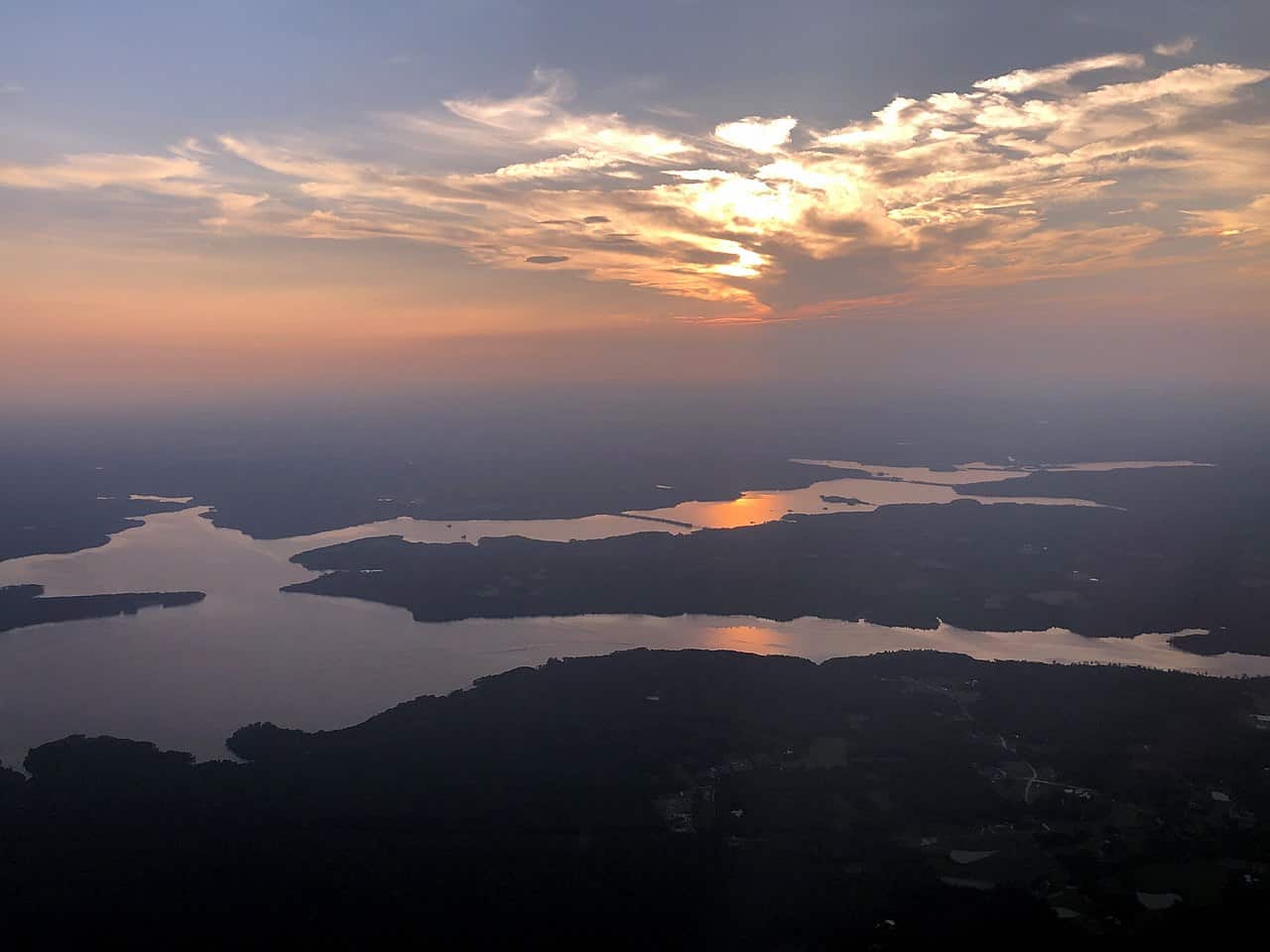
Bald eagles are frequently seen in the Rolling View area near Falls Lake.
©MadeYourReadThis / Creative Commons - License
Located north of Raleigh, Falls Lake is home to a steady year-round population of bald eagles. The lake is part of the larger Falls Lake State Recreation Area and covers over 12,000 acres. Bald eagle sightings are most frequent around the Rolling View area. In addition to eagles, bird watchers may catch sightings of great blue herons, warblers, and woodpeckers.
Along with excellent bird-watching opportunities, Falls Lake State Recreation Area features over 300 campsites and access to several trails, including the Neuse River Greenway Trail. As the state’s longest biking trail, the Neuse River Greenway follows the river for 27 miles, stretching from Falls Lake to southeast Raleigh.
1. Jordan Lake
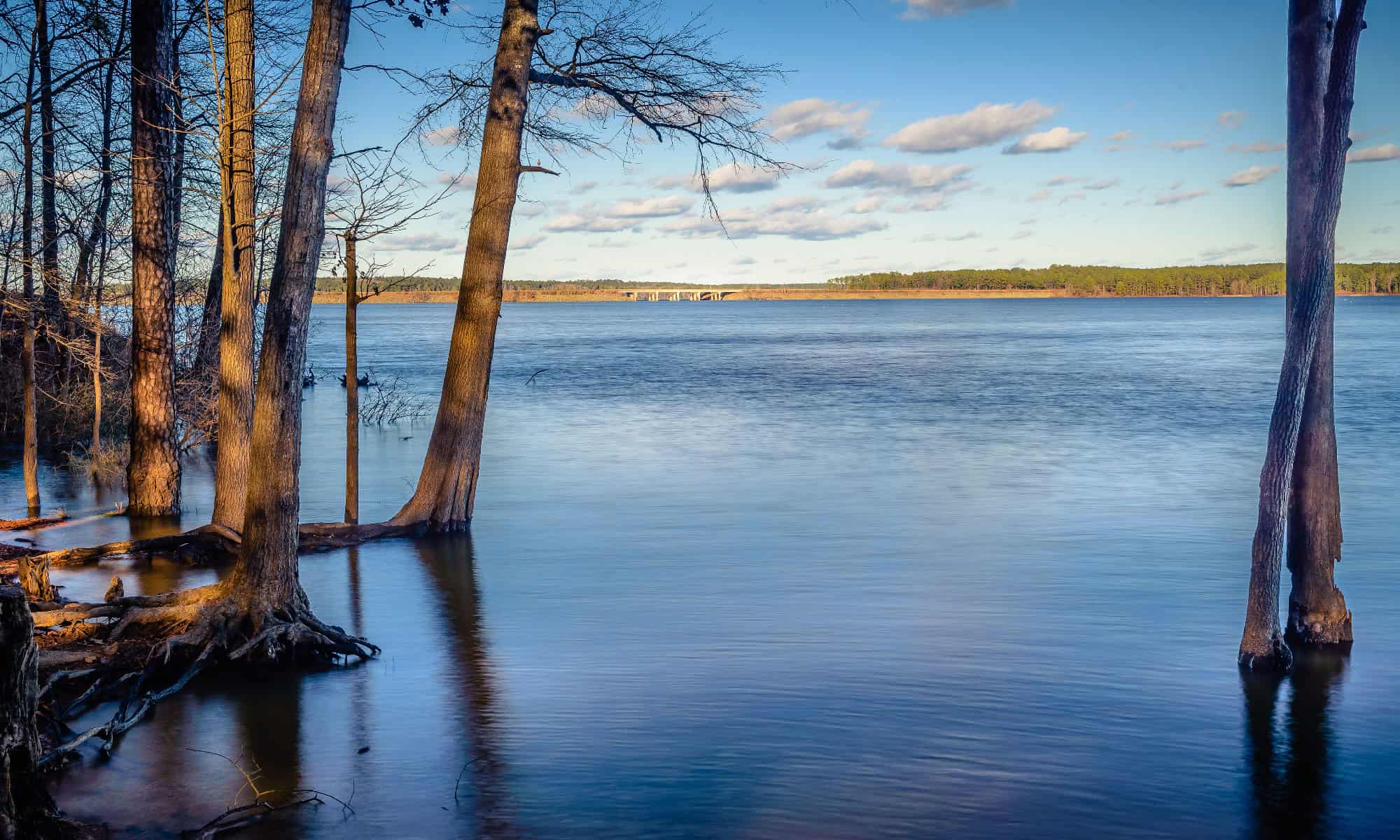
In 2019, there were at least 16 active bald eagle nests around Jordan Lake.
©iStock.com/Licec
This lake has one of the largest summertime concentrations of bald eagles, which are attracted to the lake’s abundant catfish, bass, and crappie. In 2019, bald eagle monitors documented 16 nests near Jordan Lake. In addition to the nests, monitors have observed bald eagles in the midst of their complicated mating rituals. These include high-altitude flying maneuvers and risky “death spirals” with two eagles locking their talons while diving toward the ground.
For bird watchers hoping to spot bald eagles, the Eagle Spur Trail leads to Jordan Lake from Stagecoach Road. This trail follows a former railroad line beside New Hope Creek to the lake. In addition, Jordan Lake State Recreation Area includes an eagle observation platform off of Marthas Chapel Road.
Summary of the Best Places to See Bald Eagles in North Carolina
| Rank | Location | Best Time for Eagle Sightings |
|---|---|---|
| #1 | Jordan Lake | Year-round |
| #2 | Falls Lake | Year-round |
| #3 | Fontana Lake | Year-round |
| #4 | Lake Mattamuskeet | Year-round |
| #5 | DuPont State Recreational Forest | Spring and Summer |
| #6 | Lake Norman | Winter and Spring |
| #7 | Lake James | Winter and Spring |
Thank you for reading! Have some feedback for us? Contact the AZ Animals editorial team.

